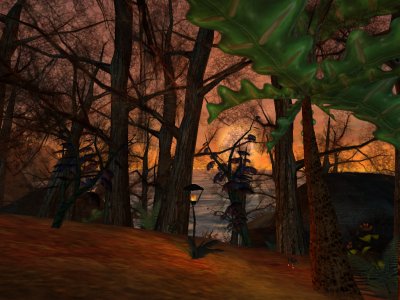GeForce256 and the First T&L-Title
Introduction
Yesterday we published our first evaluation of NVIDIA's new GeForce256 GPU using the classical set of game-benchmarks that represent the current crop of 3D-games. However, GeForce256 has been designed for the next generation of 3D-games.
Higher Polygon Count - What Does It Mean?

Future games will offer a lot more detail by using significantly more polygons than what we were used to so far. More polygons mean more 'real' detail in comparison to more complex textures. That may sound flat, but let me give you an example. Think of the face of a player in e.g. Quake2. In terms of polygons, the head is a simple cubic shape with a facial texture slapped on it. You notice that it's a simple shape with some 'wallpaper' when you walk around the player and look at it from different angles. Now you can put the most detailed textures on this simple cube, when you look at it from different angles you will still notice that this is not a face, but a simple shaped object with some great detailed textures on it. In this example, increasing the polygons could e.g. mean adding the shape of a nose, a chin and ears. The more polygons you invest in this face, the less you need high definition textures, because the actual facial structure is there, you don't need to 'cheat' with textures. Additionally, the nose will stay a nose as you look at it from different angles, the ears will always stick out as well, and the shadow of those structures will always fall in the correct direction, something that's pretty much impossible with textures. The same is valid for any kind of structure. Increasing the polygons means a more detailed wire frame. The more detailed the wire frame the less you need complex textures to make it look something that it isn't.
So far texturing has been much cheaper in terms of computing power than complex polygon structures. A simple shape can look great with complex textures, but it will never look like the real thing once your viewing angle or the lighting changes. Bump mapping for example is another way of 'cheating'. A simple structure, like e.g. a square, looks as it has little impressions or protruding areas, although the wire frame shows just a flat surface. Instead of using bump mapping you could of course model the surface structure into the actual wire frame, therefore eliminating the need for bump mapping. However, bump mapping doesn't require near as much computing horsepower as a high polygon surface, which is why bump mapping was invented in the first place.
Get Tom's Hardware's best news and in-depth reviews, straight to your inbox.